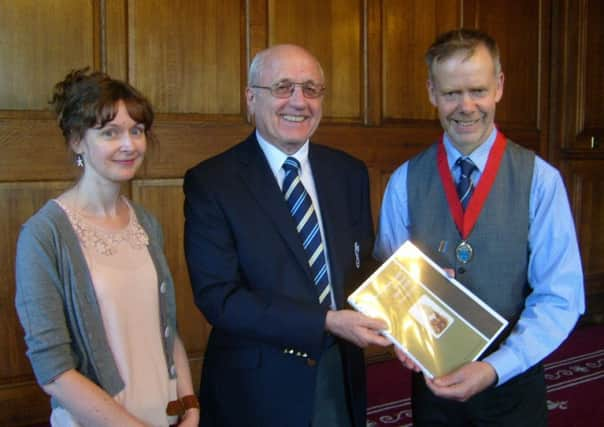New book tells Lancaster festival tale


The brainchild of philanthropist and former Mayor, William Smith, the event captured the imagination of pupils and parents alike.
Exciting soccer and netball tournaments and a host of other activities transformed Giant Axe into the beating heart of the city. Many of the families descending on the field carried with them a precious haul of hardboiled eggs, painted in a variety of brilliant colours.
Advertisement
Hide AdAdvertisement
Hide AdThese would be rolled across the grass to crash head on into a rival egg coming from the opposite direction, the object being to reduce the competition to a crushed shell!
The William Smith Festival, as it is still known to this day, has proved to be an important part of Lancaster’s social history.
And now its fascinating story has been recorded in a book written by Terry Ainsworth, whose articles on soccer nostalgia and local history appear regularly in The Visitor and Morecambe Football Club’s official match programmes.
Terry has presented copies of the book, “The William Smith Festival 18921970, a Nostalgic View,” to Mayor Jon Barry, Lancaster City Museum and Lancaster Library.
Advertisement
Hide AdAdvertisement
Hide AdTerry dedicates the book to William Smith, son of a Lancaster butcher, “who made a difference to the lives of thousands of Lancaster people and left wonderful memories for ever etched in the minds of children of the district.”
Terry explained that the festival, launched in 1892 during William Smith’s Mayoralty, was meant to be a good day out for children.
“He loved to see the smile on children’s faces,” he said.
“When we grew up it was one of the most important days of the year.
“For everyone who went to school in Lancaster it was the day, bigger than cup final day.”
Advertisement
Hide AdAdvertisement
Hide AdHaving spent two years researching the subject, which covers eight decades of the festival, Terry said: “I’m proud I have done it because it will now take its place in the town hall as an official record of an important part of the city’s history.”
The book, which includes many photographs of school teams pictured through the ages, reveals just how popular the festival has been down the decades, at one time attracting as many as 20,000 to Giant Axe, or the Easter Field as it became popularly known. Terry admits he was surprised to discover its strong religious theme.
When, after a succession of rain affected festivals it was suggested it be moved to Whit Monday, William Smith, a devout Catholic, dismissed the idea.
The egg rolling in particular meant so much to him – ‘pace’ eggs as they were known pace the Latin for Easter represented the rolling away of the stone from Christ’s tomb.
Advertisement
Hide AdAdvertisement
Hide AdTerry has produced a limited number of the books, but a copy will be available to the public at Lancaster library.
In addition, it can be read on Terry’s increasingly popular website www.soccernostalgia.co.uk and the festival continues to this day, now open to schools throughout the district, thanks to the involvement of the community arm of Morecambe Football Club.
The longevity of the festival, and Terry’s fascinating tribute to the man behind it, is testimony to the vision and generosity of one of Lancaster’s greatest founding fathers.